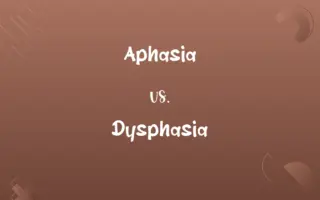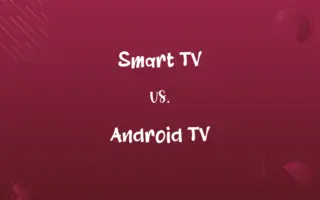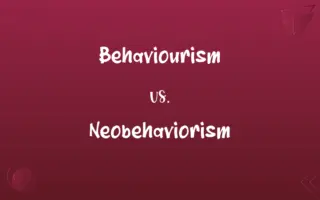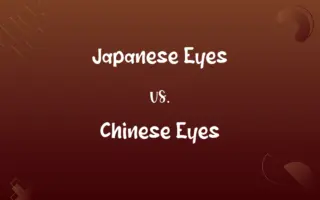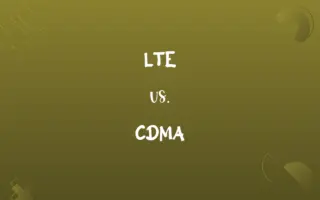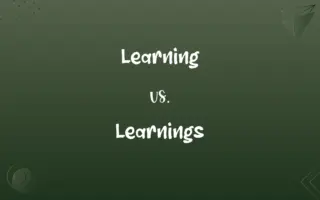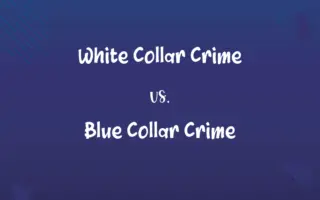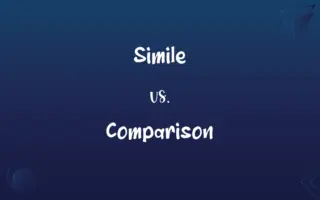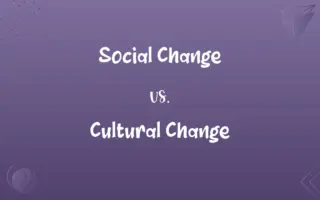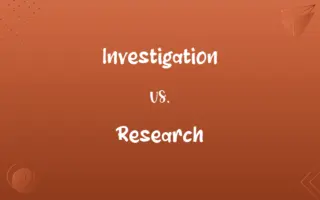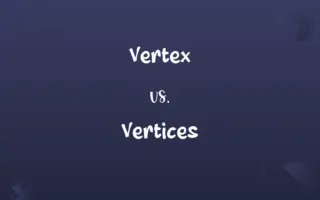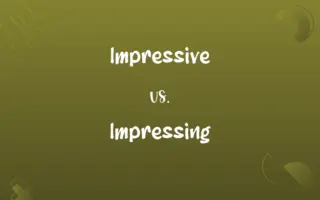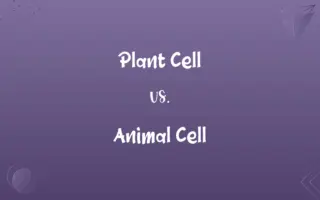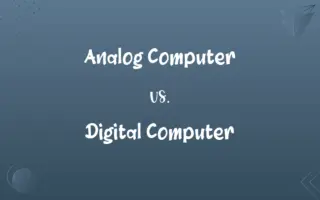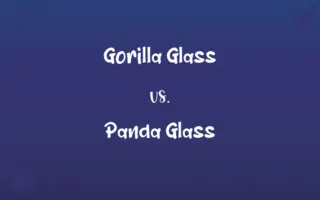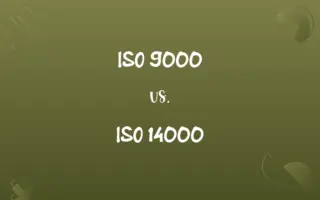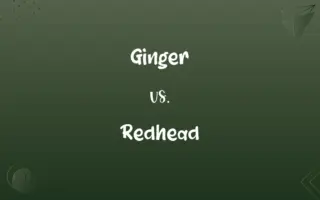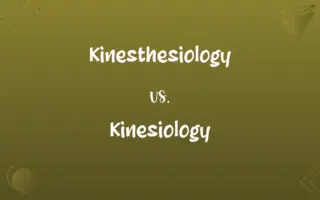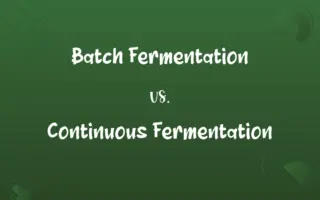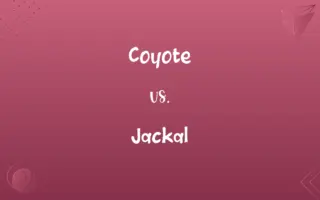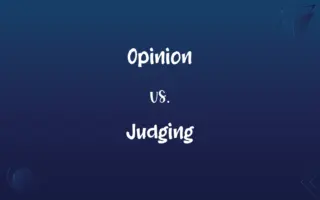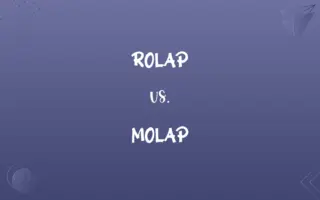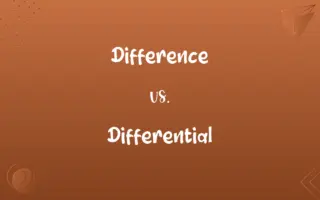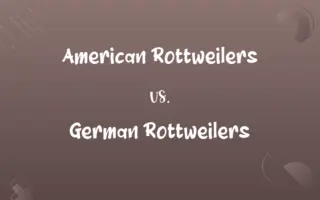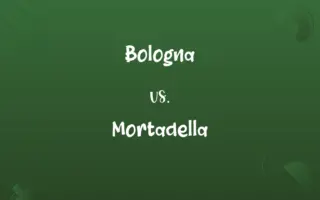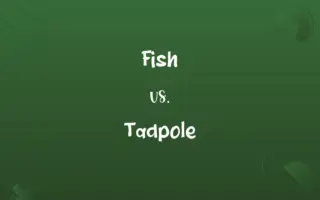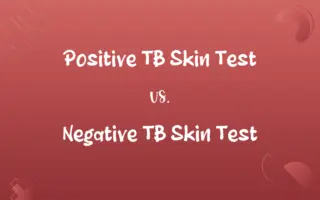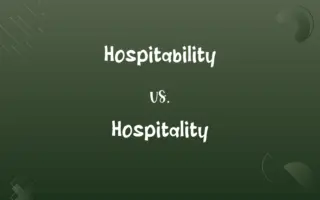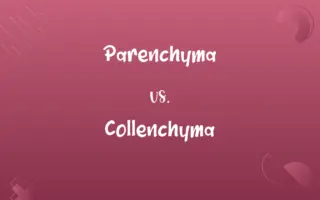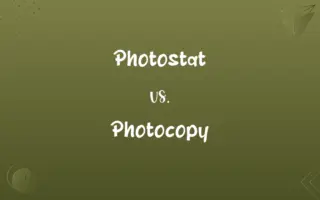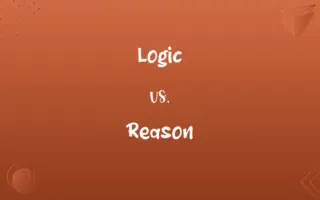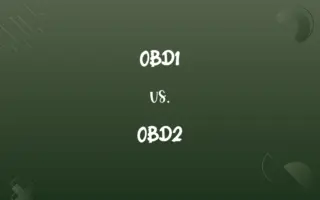Heterotroph vs. Autotroph: Know the Difference

By Shumaila Saeed || Updated on December 25, 2023
Heterotrophs are organisms that obtain their energy by consuming other organisms, while autotrophs produce their own energy through processes like photosynthesis.
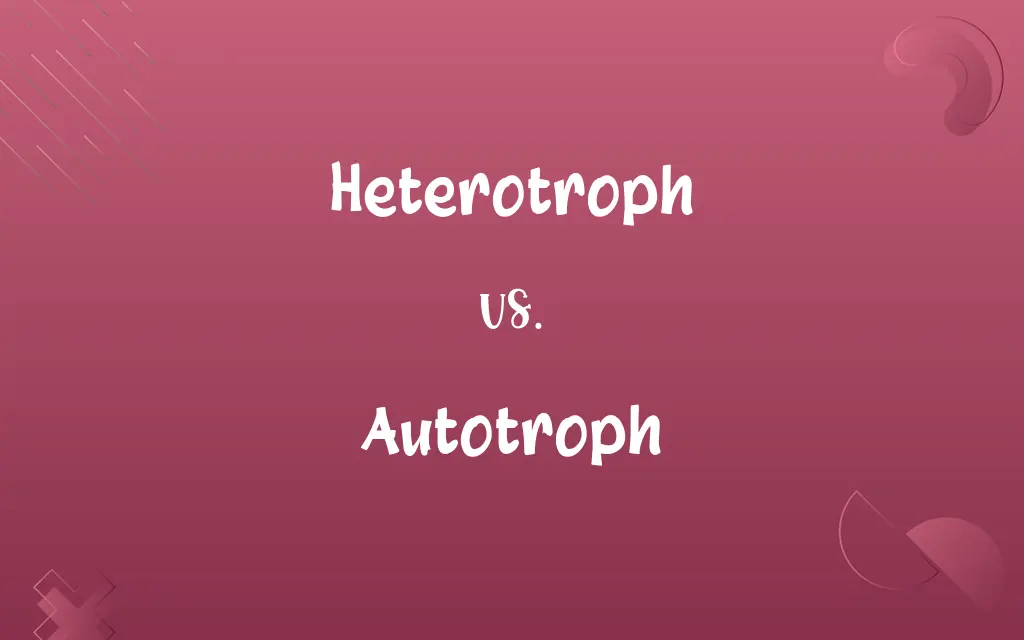
Key Differences
Heterotrophs, such as animals and fungi, rely on other organisms for food and energy. Autotrophs, like plants and algae, produce their own food through photosynthesis or chemosynthesis.
Shumaila Saeed
Nov 15, 2023
Heterotrophic organisms consume organic substances to obtain carbon for growth and energy. In contrast, autotrophs use inorganic carbon sources like carbon dioxide to synthesize organic compounds.
Shumaila Saeed
Nov 15, 2023
The diet of heterotrophs includes plants, animals, or decomposed organic matter. Autotrophs, however, use light or chemical energy to convert simple substances into organic molecules.
Shumaila Saeed
Nov 15, 2023
Heterotrophs play a role in food chains as consumers, feeding on other living or dead organisms. Autotrophs are primary producers, forming the base of the food chain by creating organic matter from inorganic substances.
Shumaila Saeed
Nov 15, 2023
The energy flow in ecosystems begins with autotrophs converting energy from sunlight or chemicals. Heterotrophs then consume these autotrophs or other heterotrophs, transferring energy through the ecosystem.
Shumaila Saeed
Nov 15, 2023
ADVERTISEMENT
Comparison Chart
ADVERTISEMENT
Heterotroph and Autotroph Definitions
Heterotroph
An organism that consumes other living things for energy.
Lions are heterotrophs that prey on other animals.
Shumaila Saeed
Nov 15, 2023
Autotroph
Primary producers in ecological food webs.
Autotrophs like plants convert CO2 into glucose, sustaining life.
Shumaila Saeed
Nov 15, 2023
Heterotroph
Depends on organic substances for nutrition.
Humans are heterotrophs, as they eat plants and animals.
Shumaila Saeed
Nov 15, 2023
Autotroph
An organism capable of synthesizing its own food from inorganic substances.
Plants are autotrophs, using sunlight to make food.
Shumaila Saeed
Nov 15, 2023
Heterotroph
An organism deriving its nutritional requirements from complex organic substances.
Birds, as heterotrophs, consume insects and seeds.
Shumaila Saeed
Nov 15, 2023
ADVERTISEMENT
Autotroph
Does not depend on other organisms for food.
Autotrophs form the foundation of the food chain in ecosystems.
Shumaila Saeed
Nov 15, 2023
Heterotroph
Feeds on complex organic matter.
Mushrooms, as heterotrophs, absorb nutrients from decomposing matter.
Shumaila Saeed
Nov 15, 2023
Autotroph
Utilizes photosynthesis or chemosynthesis for energy.
Algae, as autotrophs, produce oxygen and food through photosynthesis.
Shumaila Saeed
Nov 15, 2023
Heterotroph
Cannot produce its own food.
All animals, being heterotrophs, must find food to survive.
Shumaila Saeed
Nov 15, 2023
Autotroph
Converts inorganic materials into organic matter.
Certain bacteria are autotrophs, synthesizing food from chemical reactions.
Shumaila Saeed
Nov 15, 2023
Heterotroph
An organism that is dependent on complex organic substances for nutrition because it cannot synthesize its own food.
Shumaila Saeed
Oct 19, 2023
Autotroph
An organism capable of synthesizing its own food from inorganic substances, using light or chemical energy. Green plants, algae, and certain bacteria are autotrophs.
Shumaila Saeed
Oct 19, 2023
Heterotroph
(ecology) An organism which requires an external supply of energy in the form of food as it cannot synthesize its own.
Shumaila Saeed
Oct 19, 2023
Autotroph
(ecology) Any organism that can synthesize its food from inorganic substances, using heat or light as a source of energy.
Shumaila Saeed
Oct 19, 2023
Heterotroph
An organism that depends on complex organic substances for nutrition
Shumaila Saeed
Oct 19, 2023
Autotroph
An organism which is autotrophic, i. e., an organism (such as most plants and certain microorganisms) which are capable of synthesizing its own food from simple organic substances, requiring only minerals as nutrients for growth, and using carbonate or carbon dioxide as a source of carbon and simple inorganic nitrogen as a nitrogen source; the energy required is derived from photosynthesis or chemosynthesis. Opposed to heterotroph. See also auxotroph.
Shumaila Saeed
Oct 19, 2023
Autotroph
Plant capable of synthesizing its own food from simple organic substances
Shumaila Saeed
Oct 19, 2023
Repeatedly Asked Queries
How do heterotrophs obtain energy?
Heterotrophs obtain energy by consuming organic matter.
Shumaila Saeed
Nov 15, 2023
What is a heterotroph?
A heterotroph is an organism that consumes others for energy.
Shumaila Saeed
Nov 15, 2023
What are some examples of heterotrophs?
Examples include animals, fungi, and many bacteria.
Shumaila Saeed
Nov 15, 2023
Why are autotrophs important in ecosystems?
Autotrophs are primary producers, forming the base of the food chain.
Shumaila Saeed
Nov 15, 2023
What process do autotrophs use for energy?
Autotrophs use photosynthesis or chemosynthesis for energy.
Shumaila Saeed
Nov 15, 2023
Can an organism be both heterotroph and autotroph?
Some organisms, like certain bacteria, can exhibit both traits, but it's rare.
Shumaila Saeed
Nov 15, 2023
Do heterotrophs play a role in carbon cycling?
Yes, by consuming and decomposing organic matter, they are part of the carbon cycle.
Shumaila Saeed
Nov 15, 2023
Are humans heterotrophs or autotrophs?
Humans are heterotrophs, as they consume other organisms.
Shumaila Saeed
Nov 15, 2023
How do heterotrophs contribute to the food chain?
Heterotrophs are consumers, transferring energy by feeding on other organisms.
Shumaila Saeed
Nov 15, 2023
Do heterotrophs use photosynthesis?
No, heterotrophs do not use photosynthesis for energy.
Shumaila Saeed
Nov 15, 2023
What is an autotroph?
An autotroph is an organism that produces its own food using light or chemical energy.
Shumaila Saeed
Nov 15, 2023
Are all plants autotrophs?
Most plants are autotrophs, but there are exceptions like parasitic plants.
Shumaila Saeed
Nov 15, 2023
Do autotrophs need to eat?
No, autotrophs produce their own food and do not need to eat in the traditional sense.
Shumaila Saeed
Nov 15, 2023
Are autotrophs always at the bottom of the food web?
Generally, autotrophs are at the base of the food web as primary producers.
Shumaila Saeed
Nov 15, 2023
Can heterotrophs produce oxygen?
No, heterotrophs typically do not produce oxygen.
Shumaila Saeed
Nov 15, 2023
What's the significance of chemosynthetic autotrophs?
They support ecosystems in environments without sunlight, like deep-sea vents.
Shumaila Saeed
Nov 15, 2023
Are all autotrophs green?
Not all; some bacteria are autotrophs but not green, as they do not have chlorophyll.
Shumaila Saeed
Nov 15, 2023
How do heterotrophs affect ecosystems?
They maintain ecological balance by consuming other organisms and recycling nutrients.
Shumaila Saeed
Nov 15, 2023
Can autotrophs survive without sunlight?
Some autotrophs can survive on chemical energy through chemosynthesis.
Shumaila Saeed
Nov 15, 2023
Share this page
Link for your blog / website
HTML
Link to share via messenger
About Author
Written by
Shumaila SaeedShumaila Saeed, an expert content creator with 6 years of experience, specializes in distilling complex topics into easily digestible comparisons, shining a light on the nuances that both inform and educate readers with clarity and accuracy.
